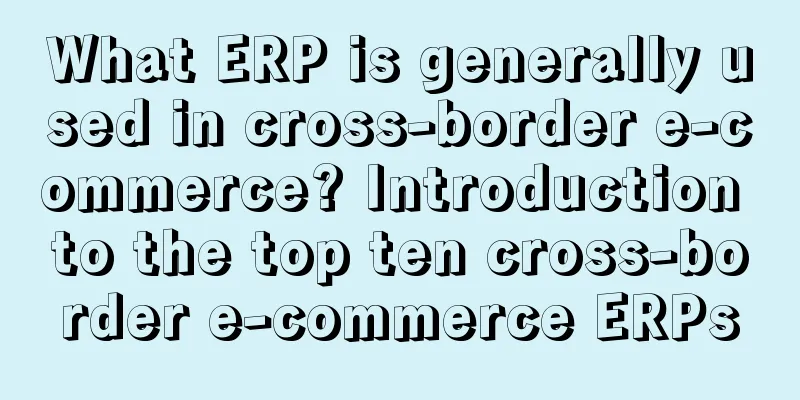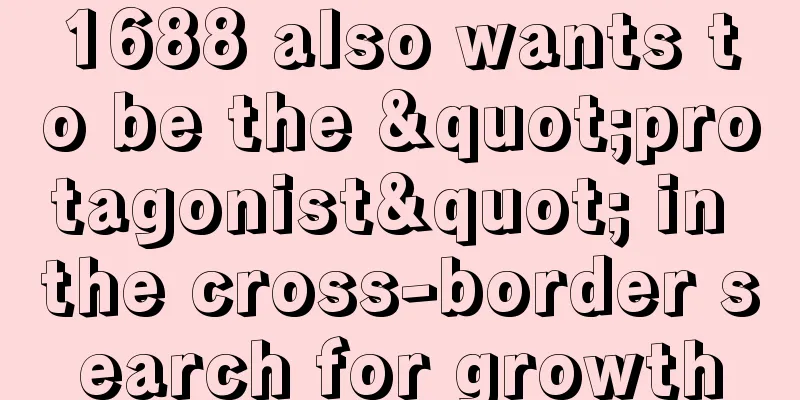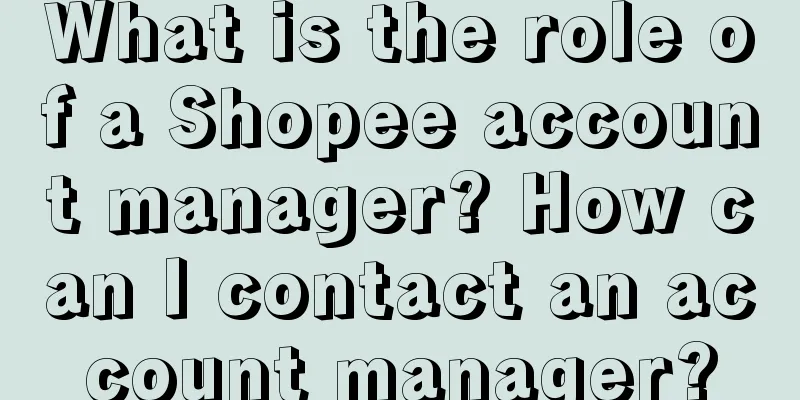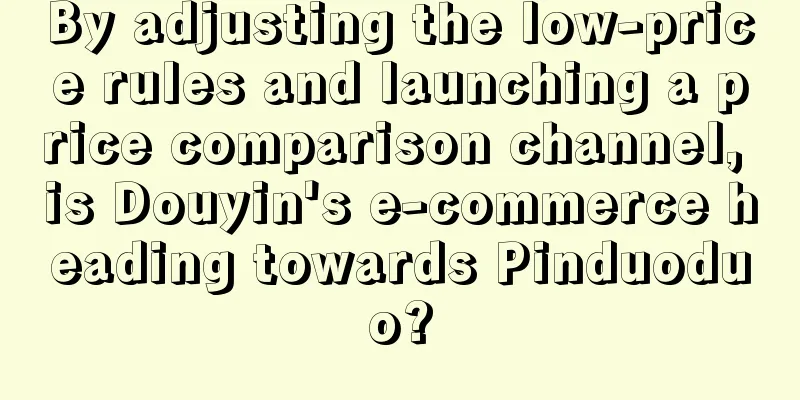What ERP is generally used in cross-border e-commerce? Introduction to the top ten cross-border e-commerce ERPs

|
Merchants in the cross-border e-commerce industry are basically using erp systems to manage some basic operations of the store, such as order management, customer service management, etc., because compared with the functions of the store backend, erp can be more localized to adapt to the needs of merchants, so what erp is generally better? What ERP is generally used in cross-border e-commerce? 1. Global Trading Assistant ERP Trading Assistant is a third-party ERP software authorized by AliExpress. It can be operated locally or on the web. It can be used with the same account. Because it is an ERP for the AliExpress platform, the AliExpress store charges 299 yuan/year, and other e-commerce platforms can be connected for free, which is very affordable. The functions of Global Trading Assistant are used to upload products, place orders and ship, move data, and quickly migrate products from other platform stores to AliExpress, and deeply connect with the AliExpress platform. 2. Saihe ERP You get what you pay for. This ERP is excellent, but the price may be unacceptable to many sellers, as it costs 8,000 per month, or 96,000 per year. In addition, the functions are not sold separately, and it supports automatic replenishment, listing and delisting, sales statistics, browse rate and other functions. Strong sellers may consider it. 3. SpeedPulse ERP Sumai is also an ERP that focuses on the AliExpress platform. Its functions meet the requirements of most sellers. It supports order processing, product listing and other functions. The docking platforms include AliExpress, Dunhuang, Amazon, eBay, wish, 1688, lazada, cdiscount, shopee, jomm, and tophatter. 4. Tongtu ERP Tongtu has a complete range of functions, including ERP (listing) and listing (order) systems. The fees are reasonable and calculated based on the order volume. You pay as you go, and there is no account limit. The platforms it connects to include eBay, AliExpress, Wish, Lazada, PM, Newegg, Mercadolibre, etc. It is quite good in terms of ordering and warehousing, and the operation page is simple and fast. 5. Mango Store Manager ERP The Mango store manager's page has a simple design style, is easy to operate and understand, has good after-sales service, and is fully functional. It is very suitable for novice sellers and can be used after registration. 6. Mabang ERP Mabang ERP was founded by professional sellers, so it knows exactly what functions sellers need. The ERP it designs can meet the basic needs of sellers, is very stable, and is connected to most cross-border e-commerce platforms. Mabang's annual fee of 3,800 is relatively cheap, with a free trial for one week, or monthly fees based on functions, and there are still many people using it. 7. Dianxiaomi ERP Dianxiaomi's charging method is more user-friendly, with multiple packages to choose from. Whether it is a large, medium or small seller, there is a suitable fee package. Up to now, the functions have been very complete, and the functional needs of sellers can be met. Almost all e-commerce platforms have been connected, so every cross-border e-commerce platform has sellers using Dianxiaomi. 8. Shengtu Cross-border ERP Provide cross-border e-commerce exporters with intelligent and automated management functions from goods -> procurement -> inventory -> sales and delivery -> after-sales -> data report analysis. 9. Yicang ERP It can manage the seller's procurement suppliers, purchase in-transit product data, warehouse storage and destocking management, outbound logistics management, corporate financial data, commodity data analysis, etc. It is a complete enterprise business management system. 10. ASINKING ERP ASINKING is a professional Amazon one-stop management system that helps sellers build a complete data-based operation closed loop. ASINKING provides sellers with accurate, comprehensive and multi-dimensional real-time data to help sellers improve efficiency and optimize processes in sales, inventory, advertising, customer service and operation management. There are still many ERPs to choose from for cross-border e-commerce, some of which are free and some are paid. However, it is understood that many free ERPs can only provide the simplest functions, and other functions require payment to activate. Paid ERP software will provide a better experience, so it is recommended that you give priority to paid ones. Recommended reading: Is it suitable to do cross-border e-commerce at the age of 50? What are the daily operations? What are the new skills for opening a cross-border e-commerce store? What should you pay attention to? Can one person do Shopee cross-border e-commerce? How to do it? |
<<: How much does a cross-border e-commerce erp system cost? What are the commonly used erp systems?
Recommend
What is the credit status of an Amazon account? What should I do if my credit status is bad?
On Amazon, the world's largest e-commerce plat...
These graduation season copywritings are so tear-jerking!
It's graduation season again, and countless ar...
E-commerce “exam”, the answer sheets are “similar”?
This article analyzes the current situation of thi...
Taobao model VS Douyin model, WeChat e-commerce stands at a crossroads
This article deeply explores the coexistence of th...
How much does it cost to buy a Meikeduo store? How much is the entry fee?
There are many e-commerce platforms now. In additi...
You can’t make money by shooting Douyin videos because you are doing it wrong!
Everyone knows the monetization ability of Douyin ...
Does Amazon brand registration have to be an R mark? What is the difference between it and the TM mark?
All products on Amazon need to be registered. When...
Does Shopee chat broadcasting cost money? What are the common questions?
On the Shopee platform, many novice sellers don’t ...
Wukong is online. What is Luckin Coffee's method for IP co-branding?
Luckin Coffee's IP collaboration with Black My...
"Crazy Four Literature" can't beat "Mai Men"? Why did KFC lose its first-mover advantage?
In many people's Internet memories, KFC's ...
What is the reason for the sudden decrease in Amazon orders? Detailed analysis
Amazon merchants need to know one thing, that is, ...
Is Maomao Jie popular again? One person sells goods worth tens of millions, and 260,000 people are online within 10 minutes of the broadcast
On December 17, Maomaojie and her busy live broadc...
38 big promotion, undercurrent
After International Women’s Day, the first major p...
How can Xiaohongshu be run without focusing on content?
In the operation of Xiaohongshu, merchants should ...
Live broadcast war 2023: Reshaped and hunted
Everyone is already familiar with the term live br...









